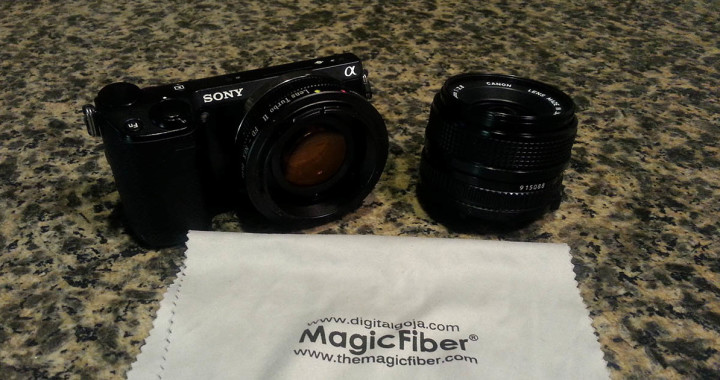As important as camera care is for photographers and videographers in normal conditions (i.e. studios, sidewalks, gymnasiums), it is arguably more important for those who take their work outdoors. Interchangeable lens cameras really open the door for particles to get on the sensor, no matter how quickly or carefully you change the lens, and camera sensor cleaning can be an absolute MUST. My current personal camera, the Sony NEX 5R, is a mirrorless design. That means once the lens is removed, the giant sensor is fully exposed to the elements. In the past I've just carried a microfiber cloth in the field to avoid scratching while wiping off smudges. That works alright, but at some point, spots on pictures might appear even after the lens is visibly clean. (By the way, lens spots are easy to remove in post on images... not so easy with video). If spots appear with a clean lens, the sensor probably has some debris on it.
The first thing to try when this happens (and the easiest), is to purchase a manual air pump like the one I've posted a link to below. Compressed air is too dangerous to try on the sensor. If the nozzle popped off of the compressed air can and hit the sensor, the problem would become bigger than a couple specs of dust. A handheld pump designed for use on camera sensors lets you push more air past the sensor than human lungs could do (and without the moisture), while not pushing so much air as to damage the delicate piece of equipment. One important note is that this should "ideally" be done as an "as needed" maintenance procedure in a dust free room. Dust free? Just let the shower steam up the bathroom. The moisture will remove the dust from the air. Then let the room dry out before cleaning. The Large Giotto AA190 is reportedly the best size for the job. However, it's also not a bad idea to have a small size out in the field. It's much more portable, and although the environment isn't dust free, could be immensely helpful in a pinch.
Static free sensor brushes are the next line of defense if the air pump doesn't get all of the debris. I have a link to one of those below. Be careful when shopping for those, as some look the same but aren't intended to be used on sensors, only lenses. The dry method of sensor cleaning that I've briefly outlined here is the safest and easiest. Other wet methods can be used and researched on the internet. I've only used the dry method.
